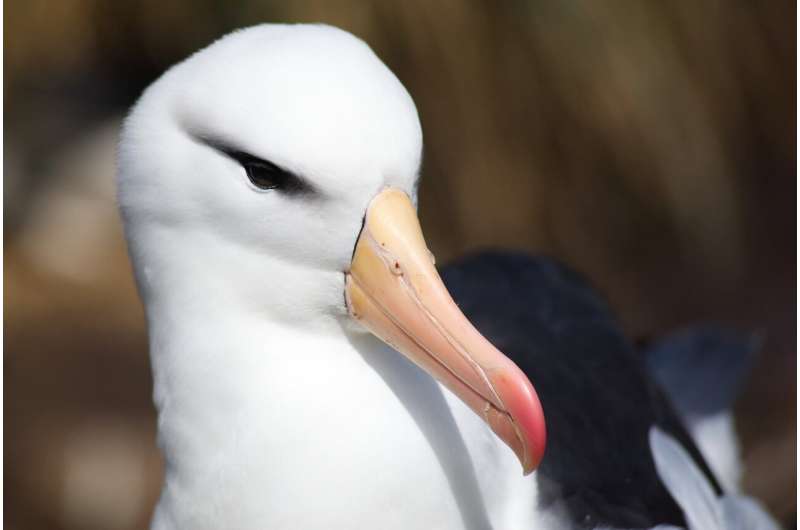November 24, 2021 report
Albatross divorce rates found to climb during times of warm sea surface temperature

A team of researchers from Universidade de Lisboa, the University of Montana, the South Atlantic Environmental Research Institute and Instituto Universitário, Rua Jardim do Tabaco, has found that black-browed albatrosses living on the Falkland Islands see rising divorce rates during times when the sea surface temperatures rise. In their paper published in Proceedings of the Royal Society B, the group outlines their analysis of data collected by wildlife researchers on the islands over a 15-year period.
The albatross, known as a long-distance flyer, is also well known for monogamous relationships. Pairs of the birds "date" for several years in their younger years before eventually finding a lifelong mates. Once pairs are formed, the relationship can last for several decades. Prior research has shown that divorce rates for the birds are quite low, typically ranging from 1 to 8 percent. Prior research has also found that the main reason for divorce is problems raising young—eggs fail to hatch; hatchlings die or are eaten by predators. In this new effort, the researchers found evidence that suggests harsh conditions can also lead to divorce, particularly if they impact reproductive efforts.
The researchers looked at data collected over the years 2004 and 2019 describing aspects of the birds living on the Falkland Islands, focusing most specifically on paired relationships. They then compared data from weather observation and environmental condition monitoring. In so doing, they found a relationship between higher divorce rates in the birds and periods when sea surface temperatures rose. Prior research has shown that during such times, upper warm water does not mix as well with lower cooler water. This leads to fewer nutrients making their way to the surface, where the birds can reach them. The result is increased hunger, which, the researchers note, can impact egg production. They also point out that hunger could lead to one or the other partner abandoning an egg or hatchling—events that could lead to one of the birds ditching the other. And once that happens, the split tends to be permanent. Divorced birds generally search for a new partner.
The researchers note that their findings could spell trouble for the albatross as the planet continues to warm, increasing the stress on pair bonding.
More information: Francesco Ventura et al, Environmental variability directly affects the prevalence of divorce in monogamous albatrosses, Proceedings of the Royal Society B: Biological Sciences (2021). DOI: 10.1098/rspb.2021.2112
Journal information: Proceedings of the Royal Society B
© 2021 Science X Network




















